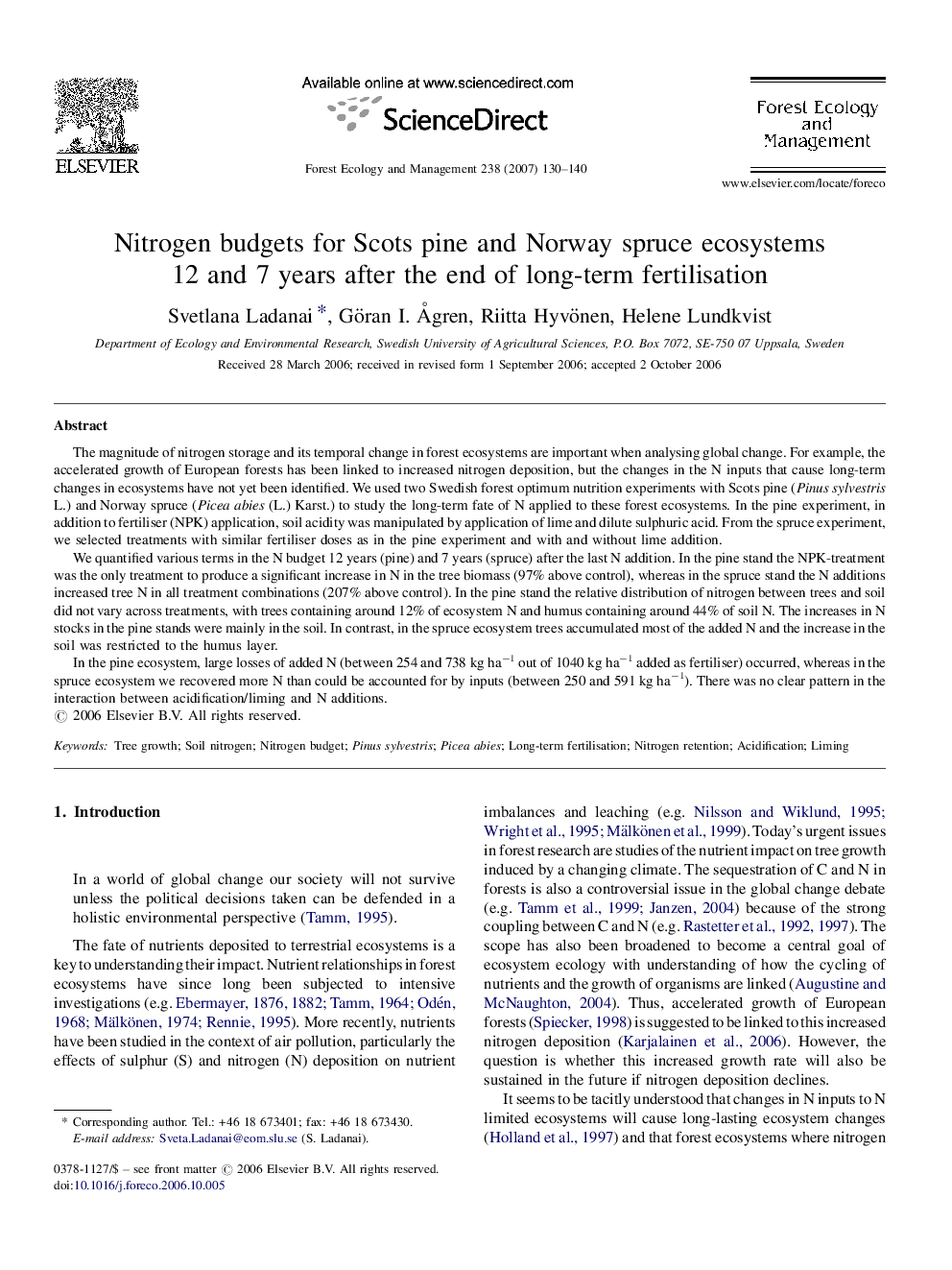| کد مقاله | کد نشریه | سال انتشار | مقاله انگلیسی | نسخه تمام متن |
|---|---|---|---|---|
| 90243 | 159374 | 2007 | 11 صفحه PDF | دانلود رایگان |

The magnitude of nitrogen storage and its temporal change in forest ecosystems are important when analysing global change. For example, the accelerated growth of European forests has been linked to increased nitrogen deposition, but the changes in the N inputs that cause long-term changes in ecosystems have not yet been identified. We used two Swedish forest optimum nutrition experiments with Scots pine (Pinus sylvestris L.) and Norway spruce (Picea abies (L.) Karst.) to study the long-term fate of N applied to these forest ecosystems. In the pine experiment, in addition to fertiliser (NPK) application, soil acidity was manipulated by application of lime and dilute sulphuric acid. From the spruce experiment, we selected treatments with similar fertiliser doses as in the pine experiment and with and without lime addition.We quantified various terms in the N budget 12 years (pine) and 7 years (spruce) after the last N addition. In the pine stand the NPK-treatment was the only treatment to produce a significant increase in N in the tree biomass (97% above control), whereas in the spruce stand the N additions increased tree N in all treatment combinations (207% above control). In the pine stand the relative distribution of nitrogen between trees and soil did not vary across treatments, with trees containing around 12% of ecosystem N and humus containing around 44% of soil N. The increases in N stocks in the pine stands were mainly in the soil. In contrast, in the spruce ecosystem trees accumulated most of the added N and the increase in the soil was restricted to the humus layer.In the pine ecosystem, large losses of added N (between 254 and 738 kg ha−1 out of 1040 kg ha−1 added as fertiliser) occurred, whereas in the spruce ecosystem we recovered more N than could be accounted for by inputs (between 250 and 591 kg ha−1). There was no clear pattern in the interaction between acidification/liming and N additions.
Journal: Forest Ecology and Management - Volume 238, Issues 1–3, 30 January 2007, Pages 130–140